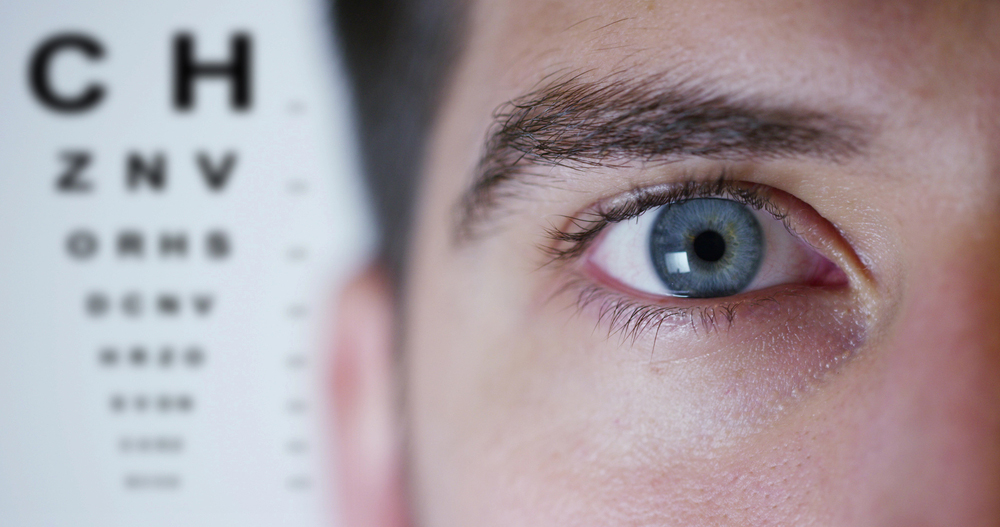
WHAT IS KERATOCONUS?
Keratoconus is a disorder of the anterior surface of the eye (the cornea). In simple terms this means that the cornea becomes thinner causing the cornea to bulge from its normal round shape to a cone shape. This bulging interferes with a person’s vision and can severely affect the way they see the world making simple tasks like reading, watching TV or driving very difficult. The distortion caused by keratoconus has been compared to viewing a street sign through your car windscreen during a driving rainstorm.
The progression of keratoconus is unpredictable but generally the condition progresses slowly and can cease at any stage. While keratoconus interferes with the clarity of a person’s sight it rarely causes blindness and in its early stages, keratoconus causes slight blurring and distortion of vision and increased sensitivity to glare and light. As the disorder progresses the degree of vision obtained through glasses becomes less acceptable and contact lenses often become the best method of correcting vision problems.
- The lenses are designed using complex computer models and manufactured on special computerized lathes.
- The complex geometry of Rose K lenses take into account the conical shape of the cornea in all stages of the condition.
- Lenses can be customized to suit each eye and can correct the myopia and astigmatism associated with the condition.
- Rose K lenses allow the cornea to ‘breathe’ oxygen directly through the lens material providing excellent health to the eye.
- The lenses are easy to insert, remove and clean.
As a result the entire lens fits better over the eye leading to better comfort and optimum visual acuity (sharpness) for patients. However due to the progressive nature of the condition, it is important that lenses are fitted with great care and reassessed at least annually by your eye care professional.
The Boston Scleral Lens Prosthetic Device (BSLPD) avoids all contact with the sensitive cornea. Instead, it rests entirely on the sclera (the tough, relatively insensitive white tissue of the eye) and creates a pool of artificial tears over the cornea that functions as a unique liquid eye bandage. This is why the BSLPD can be worn comfortably when other types of contact lenses have failed and why it never decenters, becomes dislodged or traps foreign bodies. Moreover, even severe dry eye is not an impediment to their wearing tolerance. In fact, their liquid eye bandage has been a very successful treatment for this condition.
MANAGEMENT OF EARLY KERATOCONUS
Keratoconus, meaning “cone shaped,” describes a condition in which the cornea (the clear front window of the eye) becomes thin and protrudes. This abnormal shape can cause serious distortion of visual images. The cause of keratoconus is unknown. It usually appears in a patient during their late teens or early twenties. The disease slowly progresses for 10 to 20 years as the cornea steepens and scars. Although both eyes may be affected, one eye is usually worse than the other. Vigorous eye rubbing can add to the disease process, therefore patients with keratoconus are advised to avoid rubbing their eyes.
SYMPTOMS
- Frequent changing of glasses or contact lens prescriptions
- Blurring and distortion of vision
- Glare
- Light sensitivity and irritation
- Scarring of the cornea
The symptoms described above may not necessarily mean that you have keratoconus. However, if you experience one or more of these symptoms, contact your eye doctor for a complete exam.
TREATMENT OPTIONS
The treatment approach to keratoconus follows an orderly progression from glasses to contact lenses to corneal transplantation. Glasses are an effective means of correction mild keratoconus. As the cornea steepens and becomes more irregular, glasses are no longer capable of providing adequate visual improvement. Corneal transplant surgery is indicated when a patient cannot wear contact lenses for an acceptable period of time or when the vision, even with contacts, is unsatisfactory.
A gas permeable contact lens is the most highly effective way to manage keratoconus and 90% of all cases can be managed this way indefinitely. If the cornea becomes too scarred or painful, a corneal transplant may be necessary.
SPECTACLES
Mild keratoconus can be corrected with spectacles. Retinoscopy is difficult; a normal subjective refraction is required. Monocular keratoconus is usually best dealt with using spectacle correction. In this group of patients, motivation for contact lens wear tends to be poor.
CONTACT LENSES
The use of gas permeable contact lenses has been the mainstay of the optical management of keratoconus. These lenses, manufactured in a large variety of unique designs, provide a regular surface over the cornea to neutralize the distortion brought on by the irregular cornea. No one design is best for every type of keratoconus. Since each lens design has its own unique characteristics, the practitioner needs to carefully evaluates the needs of the individual and find the lens that offers the best combination of visual acuity, comfort and corneal health.

